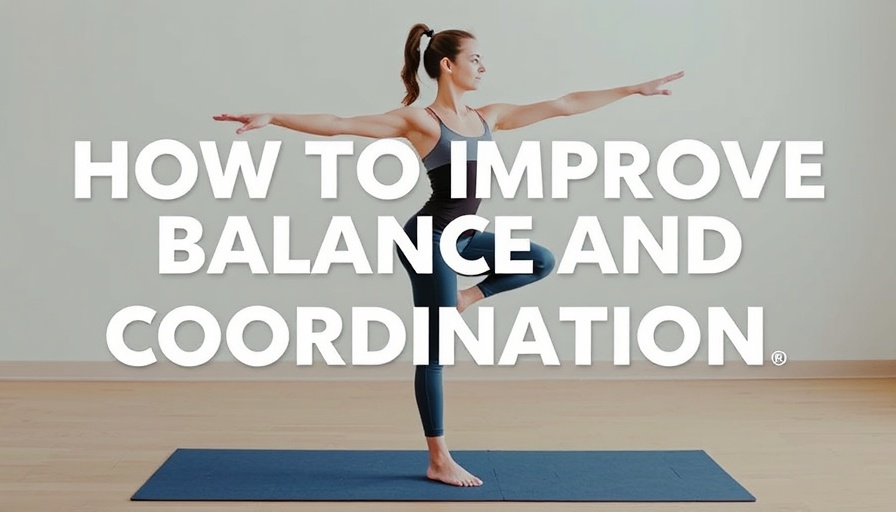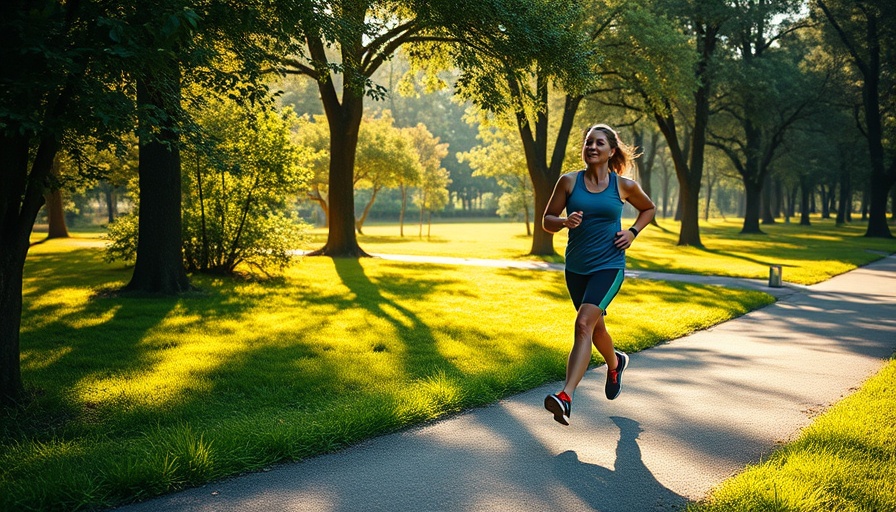
Why Balance and Coordination Matter
Balance and coordination are essential skills for everyone, especially as they play crucial roles in overall fitness and everyday activities. As we navigate through life, these abilities help prevent falls—common occurrences that often lead to serious injuries. A study conducted by the National Safety Council found that falls are among the leading causes of injury-related deaths in older adults, which makes improving balance a key component of health. But it's not just seniors who benefit; younger individuals can also enhance their athletic performance and agility by focusing on these skills.
10 Simple Exercises to Boost Your Balance and Coordination
Incorporating simple exercises into your weekly routine can dramatically improve your balance. Based on guidelines from fitness experts, here are ten effective exercises:
- Single-Leg Stance: Stand tall with feet hip-width apart, lift one foot off the ground, and hold for 10-30 seconds. Switch legs to complete the exercise.
- Heel-to-Toe Walk: Place one foot directly in front of the other, keeping heel and toes touching. Walk straight for 10-15 steps while keeping arms out for balance.
- Chair-Assisted Squats: Stand before a sturdy chair, lower yourself toward it while keeping your weight in your heels. Lightly touch the chair with your glutes before standing back up.
- Side Leg Raises: While holding onto a chair, lift one leg out to the side, then lower it slowly. Repeat 10-15 times on each side, strengthening the hips and improving lateral stability.
Demystifying Common Misconceptions About Balance Exercises
Many people believe that balance training is only for the elderly, but this couldn’t be further from the truth. Balance exercises are beneficial for all ages, providing advantages from improved sports performance to greater day-to-day stability. This misconception is tied to the societal perception that agility is only linked to youth. However, fitness is about maintaining a healthy life at any age, and balance exercises are a crucial aspect of this holistic view.
Emotional and Psychological Benefits of Practicing Balance
Engaging in balance-focused exercises does not only contribute physically; it also offers emotional benefits. By enhancing your ability to control your movements, you build confidence in your physical capabilities. This newfound confidence can diminish fear of falling and allow individuals to participate more freely in various activities. In a study published by the Journal of Aging and Physical Activity, participants who engaged in balance training reported higher levels of self-efficacy and lower anxiety.
Kickstart Your Balance Journey
Fostering good balance should be viewed as an investment in one's well-being and overall health. With routine practice of these exercises, enthusiasts can expect to see significant improvements over time. So why wait? Start implementing these exercises today to ensure you stay steady and confident on your feet.
 Add Row
Add Row  Add
Add 




 Add Row
Add Row  Add
Add 

Write A Comment